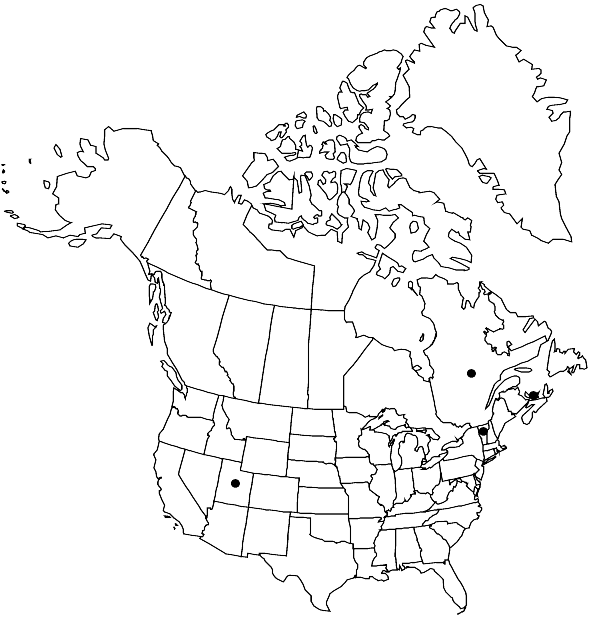Grimmia hartmanii
Syn. Musc. Eur., 214. 1860,.
Plants in ascending, dichotomously branched patches, green. Stems 2–8 cm, central strand absent. Leaves slightly contorted with often secund apices when dry, distal leaves usually falcate-secund when moist, broadly lanceolate, tapering to an acuminate apex, 2.5–4.5 × 0.4–0.6 mm, keeled, margins usually recurved on one side, awns very short, denticulate, costa firm, projecting on abaxial side; basal juxtacostal laminal cells short to long-rectangular, slightly sinuose, thick-walled; basal marginal laminal cells quadrate, thickened transverse walls; medial laminal cells quadrate to short-rectangular, slightly sinuose, thick-walled; distal laminal cells 1-stratose, margins 2-stratose. Gemmae in clusters, mulberry or raspberry-shaped, brown, borne on leaf apices, usually present. Sexual condition dioicous. [Seta straight to flexuose, 3–4 mm. Capsule extremely rare, exserted, yellowish green, clavate-obloid, smooth, exothecial cells thick-walled, annulus present, operculum rostrate, peristome teeth orange, deeply split, perforated distally, papillose. Calyptra mitrate.]
Habitat: Shaded boulders, especially granite, in woodlands
Elevation: low to moderate elevations (100-1500 m)
Distribution

P.E.I., Que., Utah, Vt., Eurasia, n Africa
Discussion
Grimmia hartmanii is principally a lowland species, occurring in the mountains up to 1500 m. With the separation of G. anomala from it, G. hartmanii is much less common in North America than was previously thought. It is known principally from the Northeast. Although it is usually found in densely shaded habitats, in areas with high humidity it can establish itself in exposed sites. It more closely resembles some species of Racomitrioideae than it does species of its own genus, but it may be recognized by the usually spreading falcate-secund distal leaves, the very small awns, and the terminal clusters of brown gemmae, which are conspicuous and usually present. Capsules are extremely rare, and are unknown in North America.
Selected References
None.